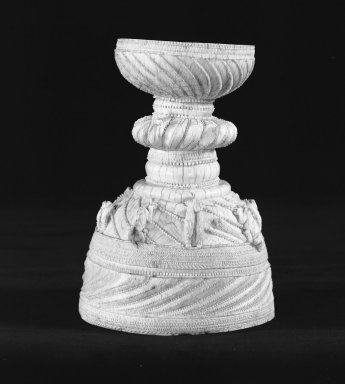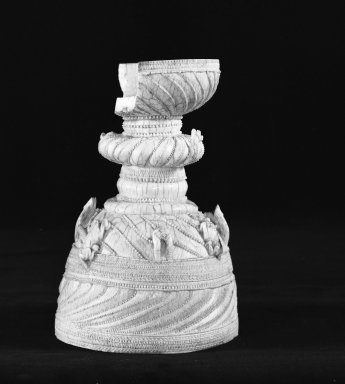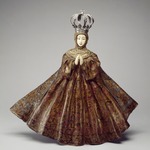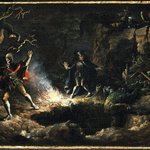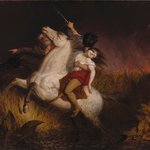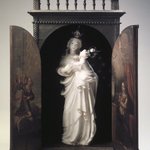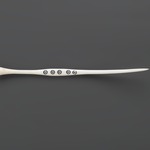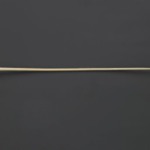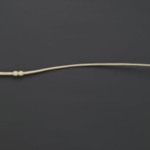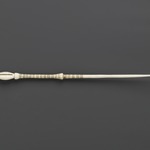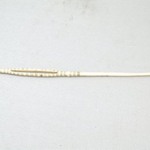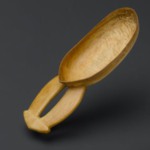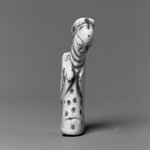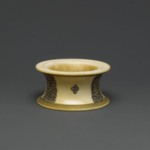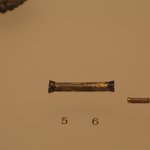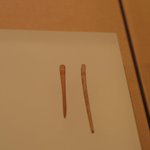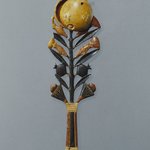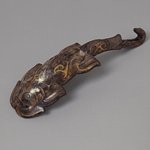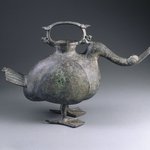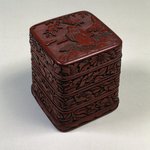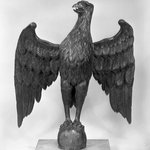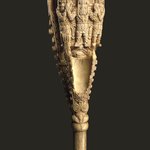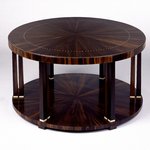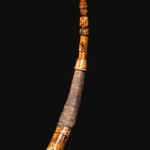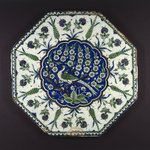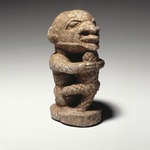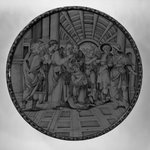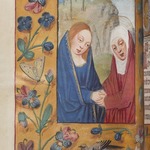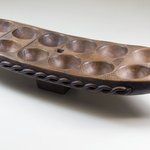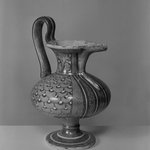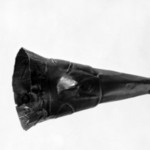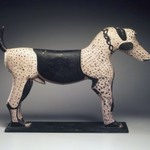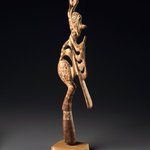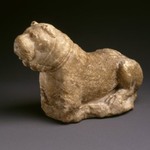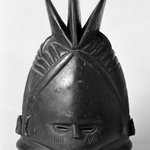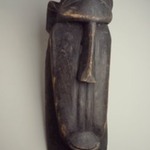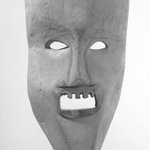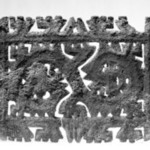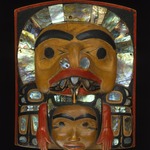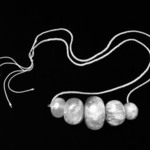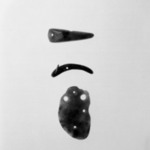

Sapi. Fragment of a Saltcellar, 16th century. Ivory, 6 3/8in. (16.2cm). Brooklyn Museum, Gift of Mr. and Mrs. Alastair B. Martin, the Guennol Collection, 52.169. Creative Commons-BY (Photo: Brooklyn Museum, 52.169_SL1.jpg)
Fragment of a Saltcellar
Arts of Africa
During the first half of the sixteenth century, Sapi craftsmen in Sierra Leone became famous for carving ivory objects for export to Europeans. This “saltcellar” actually was never meant to hold salt, but served as an ornamental pedestal cup. Now missing its lid, the cup originally had a series of four human figures—two males wearing trousers (most likely depictions of Europeans) and two nude females—alternating with four dogs around the base. Only fragments of these carved human and animal figures remain.
CULTURE
Sapi
MEDIUM
Ivory
DATES
16th century
DIMENSIONS
6 3/8in. (16.2cm)
Other (Diameter of bottom): 6 3/8 x 4 5/8 x 4 5/8 in. (16.2 x 11.7 x 11.7 cm) (show scale)



COLLECTIONS
Arts of Africa
ACCESSION NUMBER
52.169
CREDIT LINE
Gift of Mr. and Mrs. Alastair B. Martin, the Guennol Collection
CATALOGUE DESCRIPTION
Base of a "salt cellar" of chalice type. The cup stands on a convex circular base decorated with curved lines of "beaded" ivory. The stem is decorated with rows of this beading technique and has a large circular flange in the middle also decorated with "beading" and some figures in relief. The cup is decorated with bands and curving lines of "beading" as well as animals anad human figures in relief around the lower half, (4 humans, 4 animals). CONDITION: parts of the upper cup are missing, the figures in relief are badly damaged and missing. Parts of the circular base are badly damaged.
EXHIBITIONS
MUSEUM LOCATION
This item is not on view
CAPTION
Sapi. Fragment of a Saltcellar, 16th century. Ivory, 6 3/8in. (16.2cm). Brooklyn Museum, Gift of Mr. and Mrs. Alastair B. Martin, the Guennol Collection, 52.169. Creative Commons-BY (Photo: Brooklyn Museum, 52.169_SL1.jpg)
IMAGE
overall, 52.169_SL1.jpg. Brooklyn Museum photograph
"CUR" at the beginning of an image file name means that the image was created by a curatorial staff member. These study images may be digital point-and-shoot photographs, when we don\'t yet have high-quality studio photography, or they may be scans of older negatives, slides, or photographic prints, providing historical documentation of the object.
RIGHTS STATEMENT
Creative Commons-BY
You may download and use Brooklyn Museum images of this three-dimensional work in accordance with a Creative Commons license. Fair use, as understood under the United States Copyright Act, may also apply.
Please include caption information from this page and credit the Brooklyn Museum. If you need a high resolution file, please fill out our online application form (charges apply).
For further information about copyright, we recommend resources at the United States Library of Congress, Cornell University, Copyright and Cultural Institutions: Guidelines for U.S. Libraries, Archives, and Museums, and Copyright Watch.
For more information about the Museum's rights project, including how rights types are assigned, please see our blog posts on copyright.
If you have any information regarding this work and rights to it, please contact copyright@brooklynmuseum.org.
RECORD COMPLETENESS
Not every record you will find here is complete. More information is available for some works than for others, and some entries have been updated more recently. Records are frequently reviewed and revised, and we welcome any additional information you might have.
